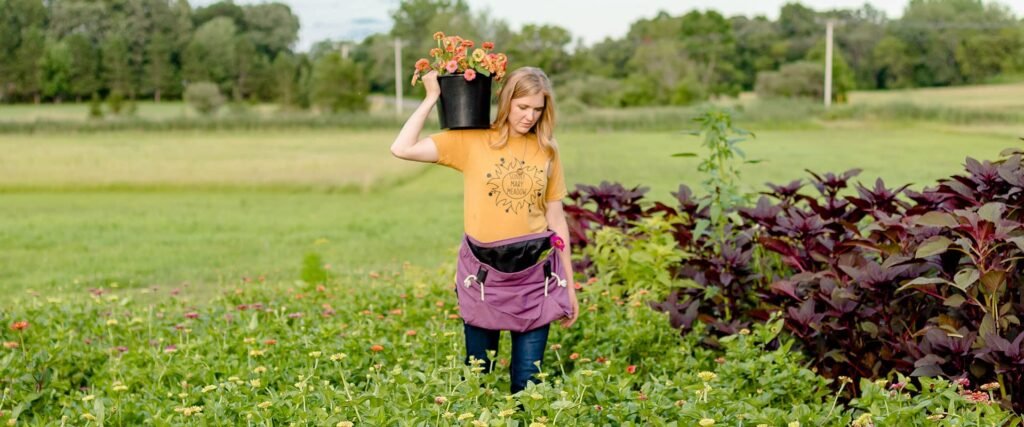
Hello! My name is Liz, and I am thrilled to tell you about the first-ever episode of the Sunny Mary Meadow Podcast! Thank you for being here, and I am just as excited as you are to see where the heck this thing goes. For all of these podcast episodes, this written blog form is not a “follow-along” guide. I may change paragraph order around because the flow of a verbal story is different from the flow of easy-to-consume written content. It’s the best way for someone to come back to something I said in the podcast and try to dig deeper, or simply a written form for those that don’t like to listen to podcasts.
I really felt like there was a need for a podcast discussing the recent explosion of growing (and selling) cut flowers. I do think that there is a lot of really good information readily available, but honestly, a lot of it is incredibly scientific (and complicated), so my goal is to take that complicated content and explain in more relatable terms what I have learned since starting my cut flower farming business four years ago.
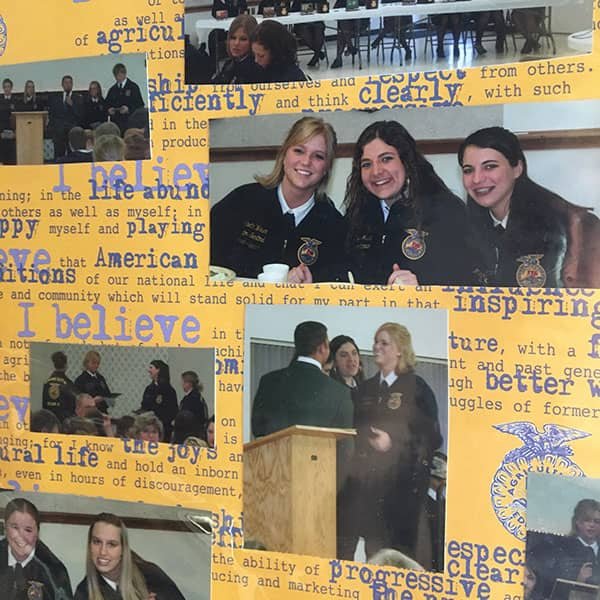
My goal is to create the podcast that I wish existed when I was trying to learn to do all of this. When I first started, I would listen to a lot of them, but they would get so technical about things, and the list was so long of what you absolutely have to do, and I started experimenting with skipping a few steps or finding my own method of doing things. I don’t want to teach you the wrong way of doing things, but I just have realized that there is a “perfect” way of doing things and often a “good enough” way of doing things. I want this podcast/blog to serve someone just starting a garden, or maybe someone who has a vegetable garden and is interested in expanding to cut flowers, or even as a business grows their own cut flowers. Even if you aren’t growing and you are simply someone that buys flowers from me or your own local flower farmer closer to where you live, I still want to say, “thank you so much for listening,” and I really hope that it adds value to your product because you know how much has gone into these bouquets.
I am by no means an expert, and I definitely want to say that you should check out your local state extension if you’re ever wondering about any specific details about your zone or area. I hope I never accidentally give advice on growing something invasive in your area or something that’s illegal. Basically, please don’t come back and sue me if something you grow is poisonous to your cat. I would never intentionally or maliciously cause harm to anyone or anything.
I am actually not formally educated in the floral or even agronomy industry. I actually have my doctorate degree as a nurse practitioner. My self-guided floral education started out in high school with competitively judging flowers in FFA. As a teenager, I was really excited about flowers in general, and I loved the idea of always having flowers in my life, but I had no idea how to make a career out of that. Plus, I was always fearful that if I turned something I loved into a career, it would become a job or chore, and I would lose my love for it. I thought hobbies would need to stay hobbies.

I ended up going for nursing because that was a logical thing to do that paid well. I thought someday I could somehow come back to the hobby of arranging flowers or have a big garden someday, but I knew I didn’t want to work in a floral shop in a formal/stuffy setting (no offense to those that do), but I had no idea how else to make a career out of flowers.
In FFA, my CDE (career development event) was floriculture, which was essentially a competition where I had to identify approximately 150 cut flowers (maybe in their cut and blooming form, and maybe in their plant bud form). We also had to take a written test of 50 questions that were both multiple-choice and written. It was on the biology and science of growing flowers, along with floral design elements and, of course, marketing and pricing. That was kind of how I got my basic knowledge of gardening, but then when it came to growing cut flowers as a business, I had quite a bit to learn. The first book I got started with was The Flower Farmer: An Organic Grower’s Guide to Raising and Selling Cut Flowers by Lynn Byczynski. My late husband called it my Flower Bible. It really gave me a solid foundation on everything I needed to know about growing, harvesting, arranging, selling, and marketing cut flowers. If you’re just getting started, that’s the one I would buy. Some of it may seem complicated, but it’s kind of like re-watching a complicated TV series, like Game of Thrones – the second and third time going through it, you catch so much more. Of course, the idol of all flower farmers, Erin Benzakein, has two books that have both great information and beautiful pictures. The first is one on growing cut flowers called Floret Farm’s Cut Flower Garden: Grow, Harvest, and Arrange Stunning Seasonal Blooms, and the next is on arranging cut flowers called Floret Farm’s A Year in Flowers: Designing Gorgeous Arrangements for Every Season. I reference them multiple times per year, although admittedly more in the off-season when I’m trying to plan on what else to grow. I also learned so much about extending my short growing season in this book about growing cool flowers called Cool Flowers: How to Grow and Enjoy Long-Blooming Hardy Annual Flowers Using Cool Weather Techniques.
In the NEXT episode/blog post, we will get to all of the nitty-gritty of all the ins and outs and details of my business and what I offer, but not yet. Right now, I will give the details of what my farm setup looks like, my equipment, and the resources available to me. I hope this is helpful if you’re trying to envision whether not (and how) you can apply this to your own flower farm (or your backyard garden) (or, you know, maybe you live in an apartment in the middle of Minneapolis and you just dream of one day owning a little slice of land somewhere). So, I just want to help you individualize it and relate it to your personal life.
My late husband and I moved out to his family farm in 2016. Yes, I said late husband. I was widowed in 2020 at the age of 31, but again, we are going to get all of that in episode two, as it really does tie into where and how my business got to where it is today.
Let’s start with some vocab and address what cut flower farming means: flowers that you cut to put in a vase. It’s pretty simple.
Not every flower is meant to be cut. There are a lot of flowers used in landscaping or in pots that do terribly in a vase. They either wilt right away or only last a few hours or a day before they wilt. One example is daylilies. It’s kind of like cows: some breeds (holsteins) are better for milk, while others (angus) are better for beef.
The general public has a very inaccurate depiction in their imagination of a cut flower farm. I think people expect to see beautiful meadows and fields that are in full bloom, but that’s not reality. The truth is: the majority of the flowers are being cut for production. They aren’t meant to look their best in the field or in nature — they are meant to look their best in the vase. Cut flower farms are actually kind of ugly because you cut the majority of the flowers before they start opening up to get the longest vase life.

That all being said, if you are really thinking of starting your own cut flower garden or farm and you think you will have this beautiful floral oasis in your backyard… you can’t always have the best of all worlds. If you need to cut the stems to make money, you won’t have open blooms because they are “wasted.” You can always overplant and spend more money on seeds, but having double the flowers is not always feasible (space, money, time, etc.)
Everyone has dreams of photos in a sunflower field, but if you’re growing those to cut in a vase, you need to cut them when they’re barely opening. They are definitely not the photogenic fields people picture.
I live in Central Minnesota, right on the border of Zone 4A and Zone 4B. As I write this in January, the actual high temp today was -2, and when I left for work this morning, it was -17.
It’s very cold here, and I can’t grow anything in a high tunnel over winter. I don’t have an actual greenhouse (heated by an external energy source), so I start some seeds in my basement, and the rest I order ready-to-plant plugs (trays of 200+ seeds) shipped to my house mid-May around the time of my last frost.
**I will be recording an entire episode about plugs vs. starting your own seeds later.
I also have 500 peonies that I planted last year. I will do an entire post or two of peonies later, but I will not be able to cut those for a couple of years.
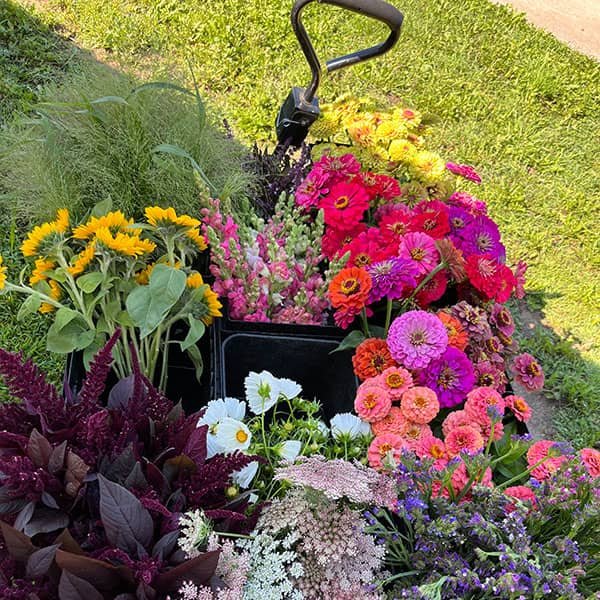
Currently, for this year, I do have about 11,000 tulips. I have half of them inside the high tunnel and half of them outside so that they bloom at different times. (Again, an episode/post on tulips will come, don’t worry!)
Last but not least, I have my annual field, which is the bread and butter of my seasonal business. I actually changed it up a little bit this year and expanded it with 18 rows that are 4‘ x 60‘ with 6 feet of grass in between them. This makes it so much easier to get through with the four-wheeler and the wagon for planting and harvesting, and it serves as a wonderful area for my customers to pick their own flowers.
This brings me to my next vocab term that needs explaining: YouPick flower area. Essentially, this allows customers to pick their own bouquets. As I said earlier, this is more complicated than it may seem to the general public. I can’t put just any flower down there because I want customers to have a great product to take home AND a great experience. For this reason, I try my best to put a lot of “easy” flowers down there that also can be picked in the late stages of blooming. For example, zinnias and dahlias should be picked when fully opened, so I try to stagger those rows, so customers always see blooms. Otherwise, it will look like a bunch of green plants that aren’t quite ready when really they are at peak picking time.
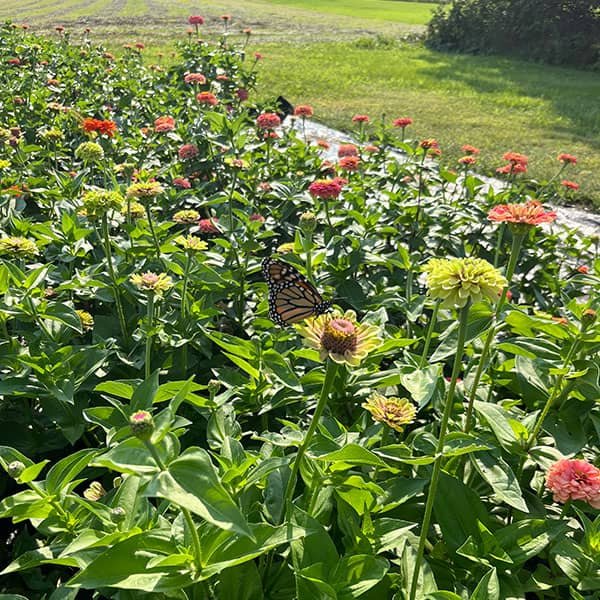
I also have another perennial section of cut flowers on the other edge of my yard that I use for cutting. I have some rows of about 15 plants of phlox, sedum, yarrow, delphinium, lilies, and coneflowers. I would love to expand on this section as it would pay off in the long run (not having to constantly buy new plants every spring), but for now, it’s a lot of weeding to keep up with
An entire episode/post is coming out of how I plan what to start from seed directly in the ground, what I start in trays, or what I just buy plugs of.
Here’s your next vocab term: cooler. The farm my late husband and I purchased used to run a USDA-inspected butcher shop until the 1980s. We have a 6’x12’ walk-in cooler from at least the 1960s. It stays about 39 to 43° with perfect humidity – I could not dream of a better cooler for storing flowers. When I first started using it for flowers, I was always really worried about what my electric bill would end up at. Much to my surprise, after constantly running throughout the hot summer months, it only went up about $100 a month.

A brief summary of the main offerings of my business:
I offer two types of flower subscriptions, where people pre-pay for either four weeks or ten weeks and get flowers every week. It’s essentially a CSA of guaranteed income for me, so it’s not so seasonal. The spring offering starts in late April, and the summer offering starts in July. I opened them for purchase in October. As I write this in January, about 75% of offerings are sold out, and I will max out at 120 bouquets per week.
Currently, I have a huge flush of spring tulips in April/May and then ranunculus in May/June. My peonies aren’t ready yet, and the rest of my flowers don’t start blooming until about the week after the 4th of July.
New in 2023, I have a nursing home sponsorship where a business can sponsor a nursing home to essentially do a stem bar. This is where I bring in buckets of flowers, and the residents can make their own bouquets. This nursing home sponsorship will be its own episode and blog post as the details of how it came about are way too long to share in a paragraph.
In addition to my seasonal blooms, I do porch pots, wreaths, and Christmas centerpieces in the fall and winter. I do order some flowers wholesale for Valentine’s Day or a few things around Christmas, but for the most part, I grow what I have at my own farm. I have recently talked to wholesalers on the phone about eventually growing for them, but let’s grow into the business for a bit. Essentially, I hope to have a really cool, unique back-and-forth relationship with this wholesaler. The majority of the flowers that I get wholesale are also grown in Minnesota and not shipped in from another continent. I’m very mindful of trying to ensure that they’re flowers I typically grow and reduce that carbon footprint. I still want to do my best to buy local flowers, even if it’s not me who grows them.
I hope this article was informative, and I just want you to be able to reference it or have a landing spot to go back to when you’re reading it, wondering, “Oh wait a minute, does she have a high tunnel?” “Oh, is that cooler she references her creepy 70-year-old walk-in refrigerator where the previous generations on her farm butchered cows?” Oh yes, I can see it now.
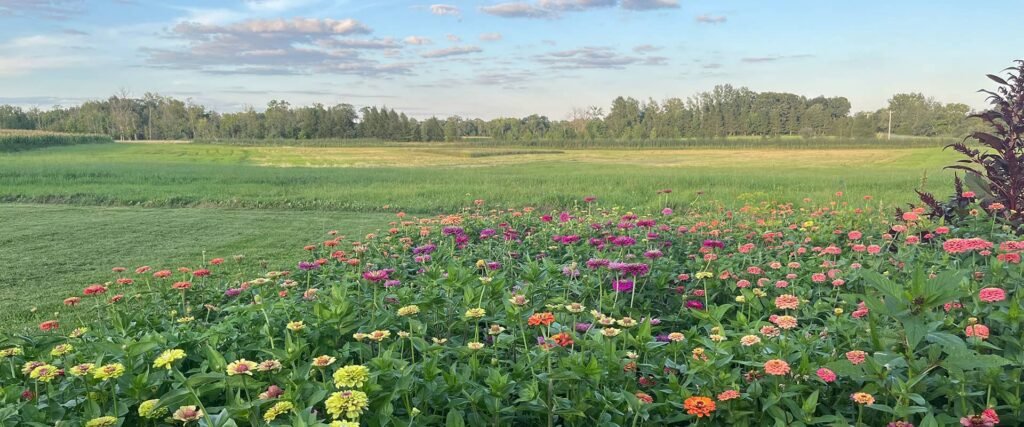
I hope that you enjoyed following along with the written version of the Sunny Mary Meadow Podcast. If you like what you’re hearing, please subscribe and rate us. You can also find us on Instagram, Pinterest, and Facebook.
You can subscribe to our email newsletter below. We love to hear any podcast-related feedback at our email podcast@sunnymarymeadow.com, and all other inquiries can be sent to liz@sunnymarymeadow.com.